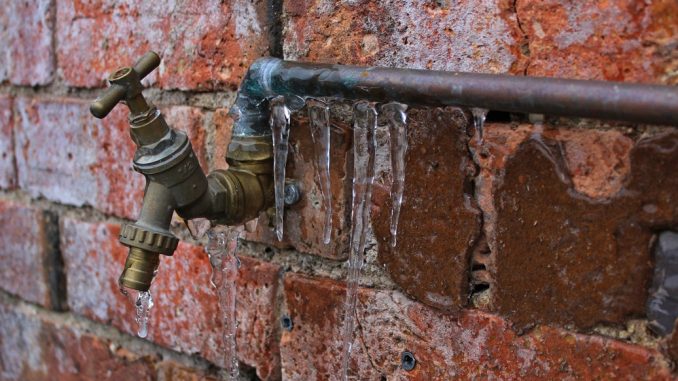
Winter is on its way which means it is time to start thinking about how you can protect your pipes and tanks from bursts and other problems caused by the freezing temperatures.
Failing to prepare is preparing to fail as the old saying goes and it rings true when it comes to the winter months and pipework. Cold weather and expanding water puts strain on pipes and tanks.
Eventually, that strain and pressure can lead to ruptures, leaks and bursts, causing serious damage to systems, property and belongings. A burst pipe in summer is bad; when it happens in the depths of winter, it can be a disaster.
Here are seven tips to prevent freezing pipes causing bursts and leaks during the winter months.
Insulate your exterior pipes
It goes without saying that exterior pipes are more exposed to winter temperatures and so more susceptible to freezing.
You can prevent this from happening by insulating them from the elements. Most DIY shops will sell insulation foam which is easy to apply – just wrap it around the pipework or tank that you want to try and keep warm.
Insulation works by preventing cold entering pipes and tanks at the same time as keeping existing heat within them. Not only is this good for stopping the build up of ice, but it can also help to reduce energy bills as you will need to burn less fuel to heat water.
Prevent draughts and cold air flows
Spaces such as garages and outbuildings often get forgotten when it comes to pipe protection as they fall under a grey area. They may not be exterior, but they do not operate under the same conditions as interior pipework either.
This makes pipes in those areas some of the most susceptible to bursts caused by freezing in the winter months.
Lots of garages have pipes running through them. You can help to protect these pipes by eliminating droughts and cold air flows from uninhabited rooms and buildings.
Blocking up gaps between doors and structures and draught proofing such spaces prevents cold air entering, which in turn reduces the chances of ice building up.
Keep the heating on
The warmer your home, the warmer your pipes. Many people will balk at the idea of having the heating on constantly, especially when properties are empty or everyone is tucked up in bed asleep and so less aware of the surrounding temperature.
Setting your thermostat to between 12 and 15℃ though ensures that your interior pipes are less likely to suffer from bursts due to ice build up caused by freezing winter temperatures.
A few extra pounds on your heating bill is nothing compared to the damage which a burst pipe can wreak – and there is even an argument that permanently warming a property can result in reduced energy costs by not asking a boiler to veer from full heating to total shutdown.
Let your taps drip during the water month
One alternative to leaving the heating on is to let your taps drip throughout winter. Even a minimal amount of flow keeps pressure within pipes and when there is pressure and movement, water is less liable to freeze.
Those who are on a water meter should keep a close eye on usage if adopting this approach. Should your numbers jump alarmingly, then it may not be the best way to go about preventing freezing pipes.
Repair leaking pipes before winter arrives
If you have been ignoring that slightly leaking pipe throughout the summer, then now is the time to repair it. Pipes which are already damaged or weakened are far more likely to burst completely under the pressure of winter temperatures.
Carrying out a pipe repair has never been easier thanks to the increasing availability and effectiveness of pipe repair kits. You can fix a leaking or burst pipe with no formal training in under 30 minutes at a fraction of the cost of hiring a professional.
With a pipe repair kit, there really is no excuse not to fix those leaks and drips before winter arrives and they turn into a much more serious problem.
Strengthen pipes that are damaged and corroded
As well as fixing pipes that are already leaking, you should take measures to strengthen pipes that are damaged and therefore more likely to break.
If your property contains pipes or tanks which are corroded or showing signs of wear and tear, then using pipe repair wraps or bandages will provide added protection during the winter months.
Specialist corrosion protection wraps can be applied to pipework to strengthen it ahead of winter. These wraps set rock-hard to prevent further weakening of the pipework from corrosion, reducing the chances of cracks and bursts occurring.
Drain your pipes and tanks if practical
The final way of protecting pipes and tanks from winter bursts is arguably the most effective. By emptying them of all water, you remove one of the factors responsible for the problem and it disappears as a result.
Obviously, this is not a practical solution for many people – but if you have a water butt or exterior pipes which will not be used over winter, then draining before freezing temperatures arrive will keep them safe from damage caused by ice.

Leave a Reply